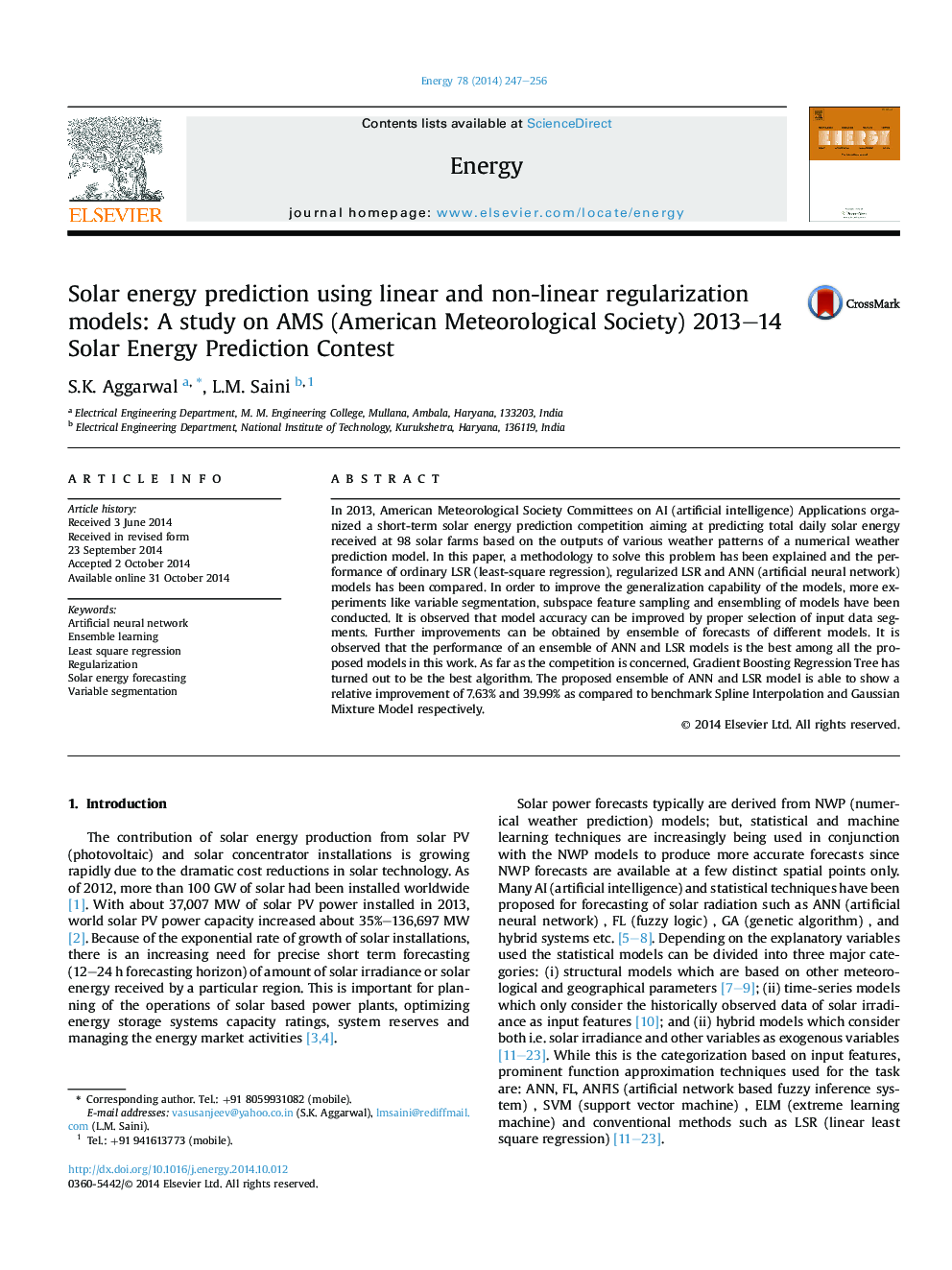| Article ID | Journal | Published Year | Pages | File Type |
|---|---|---|---|---|
| 8076027 | Energy | 2014 | 10 Pages |
Abstract
In 2013, American Meteorological Society Committees on AI (artificial intelligence) Applications organized a short-term solar energy prediction competition aiming at predicting total daily solar energy received at 98 solar farms based on the outputs of various weather patterns of a numerical weather prediction model. In this paper, a methodology to solve this problem has been explained and the performance of ordinary LSR (least-square regression), regularized LSR and ANNÂ (artificial neural network) models has been compared. In order to improve the generalization capability of the models, more experiments like variable segmentation, subspace feature sampling and ensembling of models have been conducted. It is observed that model accuracy can be improved by proper selection of input data segments. Further improvements can be obtained by ensemble of forecasts of different models. It is observed that the performance of an ensemble of ANN and LSR models is the best among all the proposed models in this work. As far as the competition is concerned, Gradient Boosting Regression Tree has turned out to be the best algorithm. The proposed ensemble of ANN and LSR model is able to show a relative improvement of 7.63% and 39.99% as compared to benchmark Spline Interpolation and Gaussian Mixture Model respectively.
Keywords
Related Topics
Physical Sciences and Engineering
Energy
Energy (General)
Authors
S.K. Aggarwal, L.M. Saini,
